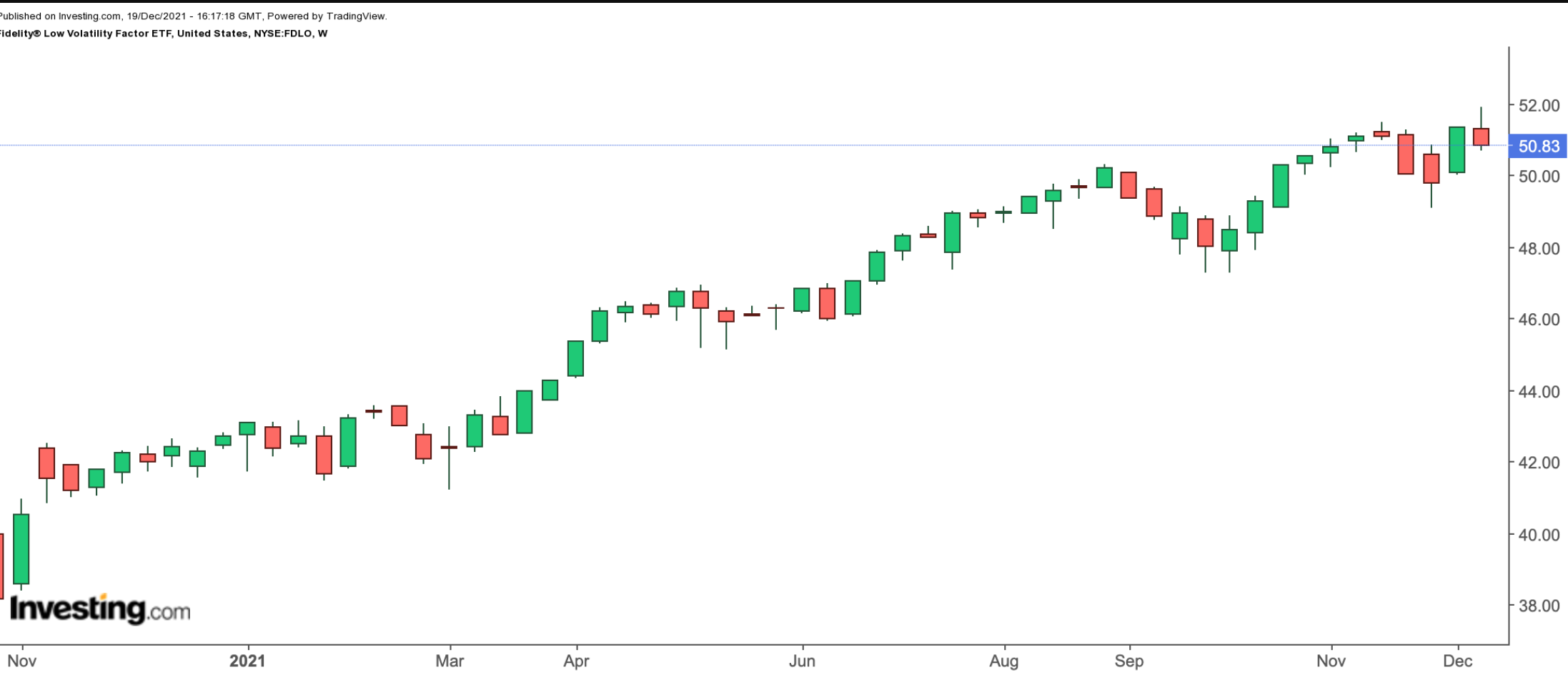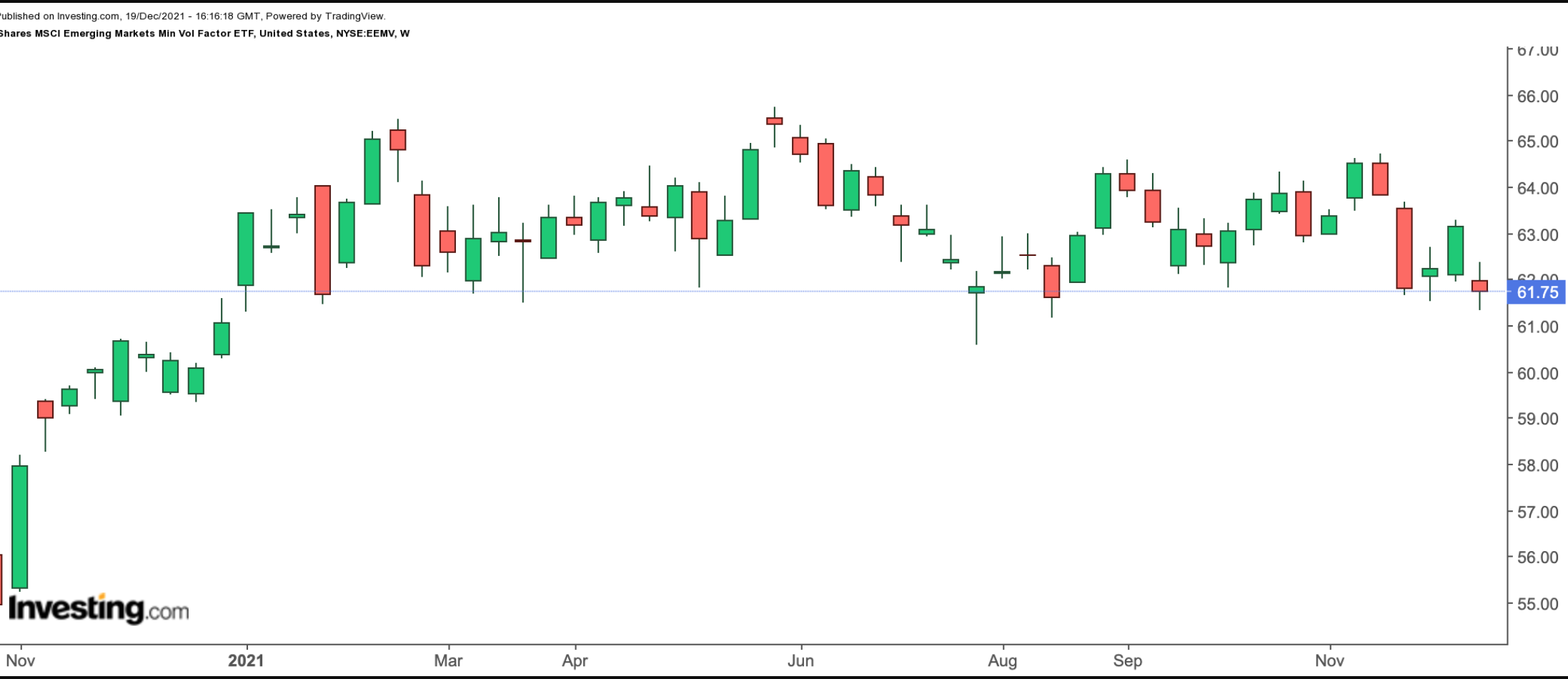The Federal Reserve, which will accelerate its tightening policies in 2022, is eyeing three interest rate hikes in the coming months. Meanwhile, the Omicron variant has led to a significant increase in the number of COVID-19 cases in many countries worldwide.
As a result, the Netherlands has gone into lockdown, and the UK is expected to follow suit, with at least a partial lockdown. Governments have been announcing global travel restrictions as well.
December has therefore been a nervous time for investors. Wall Street has been keeping a close eye on the CBOE Volatility Index (VIX), the prominent benchmark for US stock market volatility. Earlier in the month, the VIX went well over 30, a level not seen since February.
Market participants are looking at which steps to take against further choppiness in equities. For example, short-term traders might be considering the iPath® Series B S&P 500® VIX Short-Term Futures™ ETN (NYSE:VXX), an ETN that aims to generate a daily return matching the daily change in short-term futures contracts tracking the VIX.
Today’s article introduces two exchange-traded funds (ETFs) for investors aiming to buy shares with less volatility.
1. Fidelity Low Volatility Factor ETF
- Current Price: $50.83
- 52-week Range: $41.22 – $51.91
- Dividend yield: 1.14%
- Expense ratio: 0.29% per year
The Fidelity® Low Volatility Factor ETF (NYSE:FDLO) invests in large and mid-capitalization (cap) US firms with lower volatility than the broader market. The fund started trading in September 2016.

FDLO, which has 130 holdings, tracks the Fidelity US Low Volatility Factor TR USD Index. The top 10 names make up about a quarter of net assets of $480.4 million.
Information technology (IT) has the largest sector weighting in FDLO with 27.63%. FDLO further allocates 13.07% to healthcare, 12.12% to consumer discretionary and 11.97% to financials.
Leading holdings include tech darlings Microsoft (NASDAQ:MSFT), Alphabet (NASDAQ:GOOGL) (NASDAQ:GOOG), Amazon (NASDAQ:AMZN); professional services and consulting group Accenture (NYSE:ACN); Dow 30 member UnitedHealth Group (NYSE:UNH); and retail giant Home Depot (NYSE:HD).
The fund returned 19.4% in the past 52 weeks, and saw a record high in recent days. Trailing P/E and P/B ratios stand at 27.22x and 5.22x. Interested readers could regard a potential decline toward $47.5 as a better entry point.
FDLO faces competition from several other low volatility ETFs. These include:
- Invesco S&P 500® High Dividend Low Volatility ETF (NYSE:SPHD);
- Invesco S&P 500® Low Volatility ETF (NYSE:SPLV),
- iShares MSCI USA Min Vol Factor ETF (NYSE:USMV), and the
- SPDR® SSGA US Large Cap Low Volatility Index ETF (NYSE:LGLV)
Low-volatility funds, such as FDLO and others, could help long-term investors be ready if and when volatility spikes to new highs. Thus, these ETFs deserve further due diligence.
2. iShares MSCI Emerging Markets Min Vol Factor ETF
- Current Price: $61.75
- 52-week Range: $59.35 – $65.74
- Dividend yield: 2.18%
- Expense ratio: 0.25% per year
Our second fund takes us outside the US. The iShares MSCI Emerging Markets Min Vol Factor ETF (NYSE:EEMV) invests in emerging market (EM) shares with less volatility than broader EM markets. The fund started trading in October 2011.

EEMV, which has 322 holdings, tracks MSCI Emerging Markets Minimum Volatility Index. The top 10 names comprise around 15% of net assets of $3.7 billion.
In terms of sectors, we see financials (21.52%) followed by IT (16.61%), communication (16.42%) and consumer staples (10.66%). Over 285 of the names come from China. Next in line are companies from Taiwan (17.19%), India (15.37%), Saudi Arabia (8.84%) and South Korea (7.73%).
Emirates Telecom (AD:ETISALAT), Taiwan Cooperative Financial Holding (TW:5880), Chunghwa Telecom (NYSE:CHT), Taiwan Semiconductor Manufacturing (NYSE:TSM) and First Financial Holding (TW:2892) are among the leading names on the roster.
The fund returned 2.5% in the past year, and hit an all-time high (ATH) in June. P/E and P/B ratios are 19.61x and 2.26x. A potential decline below $60 would improve the margin of safety for long-term buyers.
